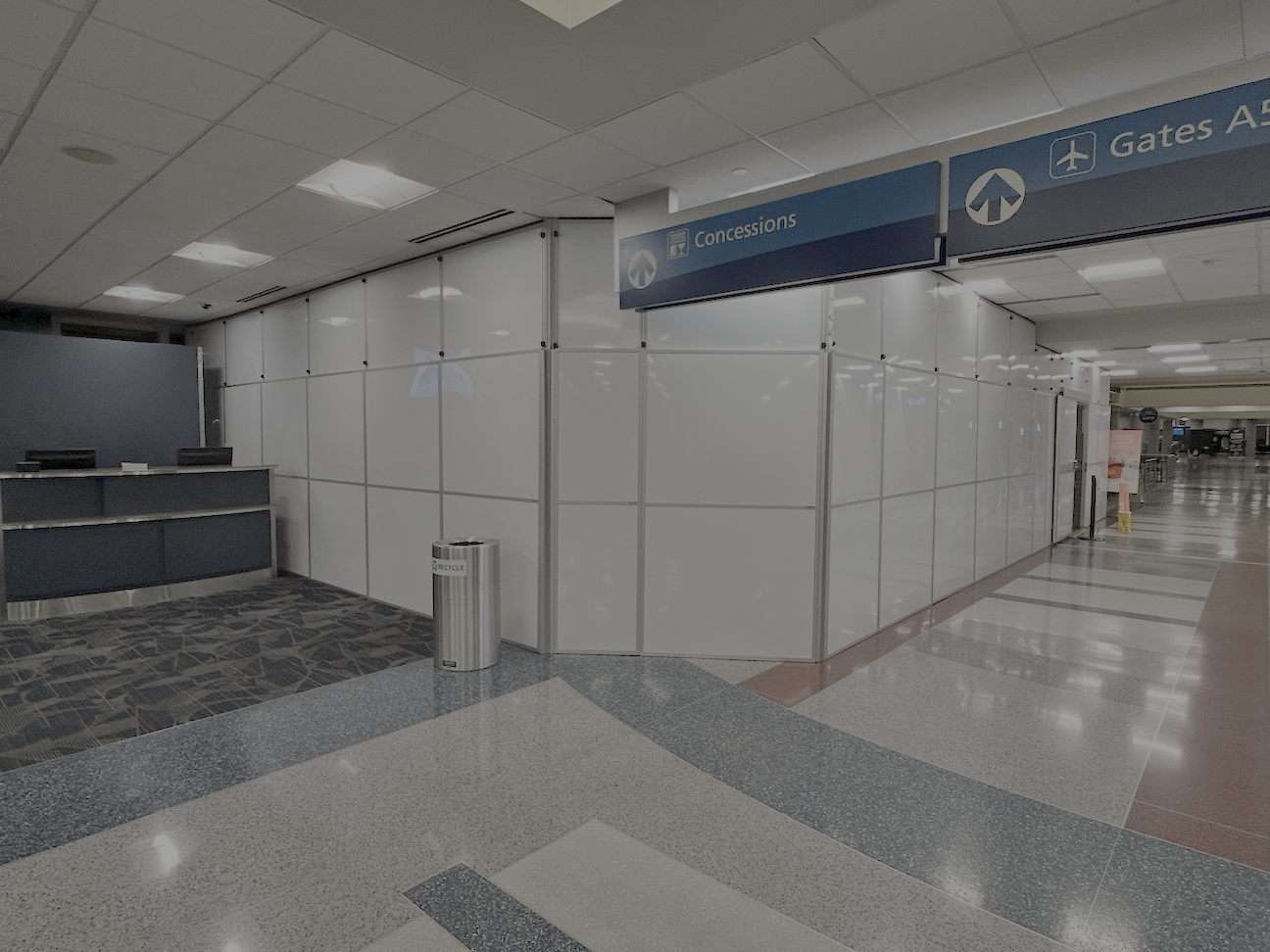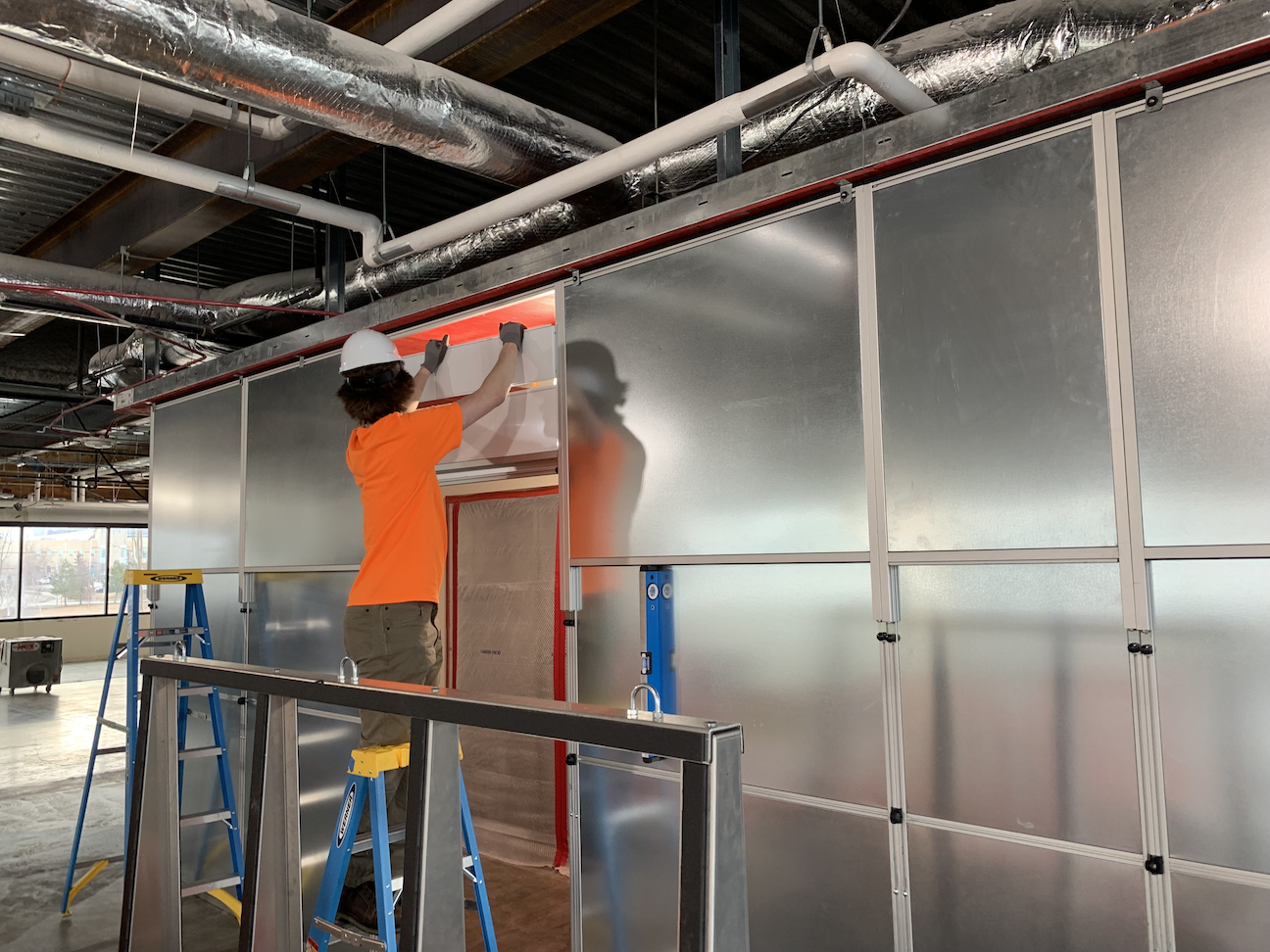Renting vs. Buying Temporary Walls for Construction Projects
Temporary walls have become an indispensable tool for construction and renovation professionals. Whether it’s containing dust, controlling noise, or creating seamless, adaptable spaces, temporary walls are helping contractors, facility managers, and project leaders work more efficiently than ever. But as the demand for these solutions grows, there’s an important decision to make—should you rent or buy?
This guide will help general contractors, construction managers, and facility leaders weigh the financial and operational impacts of renting versus buying temporary walls. By the end, you’ll have the information needed to make the best decision for your projects.
The Growing Trend of Temporary Walls
Temporary walls are no longer a luxury; they’ve become essential to successful construction and renovation projects. From long-term hospital renovations to short-term commercial office upgrades, temporary walls help keep operations running smoothly for both workers and occupants.
Why Are Temporary Walls in High Demand?
- Efficient Containment: Temporary walls provide a reliable barrier to limit dust, debris, and noise, protecting adjacent environments such as office spaces, retail stores, or healthcare facilities.
- Minimized Downtime: For clients wanting to avoid disruptions to their businesses, temporary walls enable operations to continue safely and comfortably for employees and visitors.
- Modular and Adaptable: These walls are designed to meet the unique needs of any project, offering flexibility in size, shape, and style.
Key Benefits of Temporary Walls
- Safer Work Environments: Ensures compliance with health and safety regulations by physically separating construction from operational areas.
- Stylish, Professional Finish: Unlike basic plastic sheeting or traditional plywood, modern temporary walls offer a clean, polished look that complements professional settings.
- Eco-Friendly Options: Many temporary wall systems are designed to be reusable, helping promote sustainable construction practices especially when compared to putting up drywall.
The Economics of Renting vs. Buying
When deciding whether to rent or buy, it’s critical to evaluate the financial and operational implications.
Renting Temporary Walls
Renting offers a cost-effective, hassle-free solution for any project.
Key Advantages of Renting:
- Lower Upfront Costs: You only pay for the time you’re using the walls, avoiding significant capital expenditures.
- Turn-key Service: Full-service rental providers like Temporary Wall Systems handle delivery, installation, tear-down, and removal, saving time and effort for your crew.
- No Maintenance Costs: The rental company ensures the walls are in top condition, eliminating repair or cleaning expenses.
- Flexibility for Specific Timelines: Renting allows businesses to adapt quickly to tight schedules or unexpected changes without long-term commitments.
Buying Temporary Walls
For organizations with frequent or long-term construction needs, purchasing temporary walls might make financial sense in the long run, but come with more costs and headaches down the line.
Potential Benefits of Buying:
- Reusability for Recurring Projects: Owned temporary walls can be reused across multiple projects, although you will need a crew that is spending time on putting up containment instead of working on the real job.
- More Control: Ownership gives managers the ability to adjust and redeploy the walls as needed without relying on third-party scheduling. However, you will also be responsible for the upkeep, maintenance, and storage of the walls.
- Custom Modifications: Permanent ownership allows for personalized modifications to meet unique project requirements.
Ultimately, choosing between renting and buying comes down to your specific project needs, budgets, and timeframes.
Why Renting Walls Makes Sense
1. Project Duration Flexibility
- Short-term renovation (e.g., a 2-month office revamp) or Long-term recurring projects? Renting is likely the smarter choice because it gives you the flexibility to change your needs on the fly when things change.
2. Maintenance-Free
- Save capital by renting and not worrying about maintenance, cleaning, and storage of the walls.
3. Available Budget
- Limited funds? Rentals free up resources for other essentials.
4. Ease of Logistics
- Time and resources stretched thin? Choose a rental provider that handles installation and removal for you.
Case Study Example – South Jersey Eye Physicians
One success story that illustrates the power of temporary walls is the renovation of South Jersey Eye Physicians in Moorestown, NJ.
During a three-phase renovation, Temporary Wall Systems partnered with A-1 Construction to ensure the business could remain operational for doctors and staff without inconveniencing patients. The rented walls were delivered, installed, and dismantled at every project phase—on schedule and without creating dust or mess.
Doctors praised the clean, professional look of the walls, which provided effective noise reduction to keep patient areas welcoming. These temporary walls were instrumental in maintaining uninterrupted care throughout the renovation process.
The Takeaway for General Contractors and Decision-Makers
When deciding whether to rent or buy temporary walls, it all comes down to your operational needs, project timelines, and budget constraints.
- Rent Temporary Walls if you prioritize affordability, flexibility, and convenience.
- Buy Temporary Walls if your organization has the resources to manage maintenance and redeployment.
With providers like Temporary Wall Systems, the hassle of choosing disappears. Our full-service solutions include flexible rentals, professional installations, and prompt removals, making every project seamless and cost-effective.
Looking for the right temporary wall solution for your next project? Contact us today for a free consultation and discover how we can streamline your construction or renovation needs.



